The best gaming TV in Australia 2024: the top TVs for PS5 and Xbox Series X
Find your console's perfect match and elevate your gameplay

1. The list in brief
2. Best overall
3. Best budget
4. Best mid-range for PS5
5. Best premium for PS5
6. Best for sizes
7. Best for bright rooms
8. Best cheap OLED
9. Best premium OLED
Searching for the best gaming TV to pair with your console require a bit of thought. You need to consider your budget, firstly, and then figure out which TV will give you the best image quality for the room it's placed in, and whether it comes with specific gaming features.
For example, both the PS5 and Xbox Series X are designed with HDMI 2.1 connectivity in mind, meaning you’ll need a TV that supports this standard via its HDMI ports to experience the full capabilities of either console. While some TVs with the older HDMI 2.0 standard will offer gaming support features such as variable refresh rates (VRR) and auto-low latency mode (ALLM), the newer HDMI 2.1 is unique in being able to offer crucial support for 4K resolution at greater frame rates. This is because HDMI 2.1 has a higher maximum bandwidth (48Gbps) compared to HDMI 2.0 (18Gbps).
To help you find the right TV to meet your needs, we’ve put a variety of screens to the test with a number of different gaming devices to come up with the following list of the top gaming TVs in Australia. You’ll also find a handy guide to understanding the terms and features your TV will need at the bottom of this page.
The quick list
Below you can find our top choices for the best gaming TV in Australia right now along with our summarised opinion. You can jump to a more detailed review of each pick, and compare prices for each to help ensure you find the best deals.
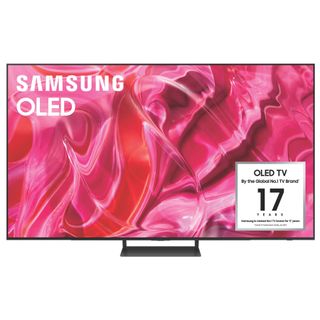
The best gaming TV overall
Offering the full suite of gaming features, four HDMI 2.1 ports and great levels of brightness, the Samsung S90C is a well-priced gaming TV that will suit most people.

The best budget gaming TV
If you want a gaming TV with all the bells and whistles, but don't have a bottomless pocket, the TCL C845 is the one for you. With HDMI 2.1 support, VRR up to 144Hz and Auto Low Latency Mode, it will hold you in good stead no matter which console you own.

The best mid-range TV for PS5
The X90L combines Sony's 'Perfect for PS5' tech and an attractive price, meaning you can get the best out of your console without having to spend a fortune.
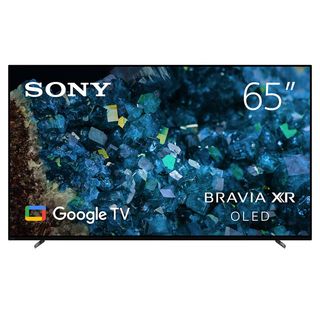
The best OLED for PS5
The A80L also gets Sony's 'Perfect for PS5' tech, but this time coupled to a gorgeous – and affordable – OLED screen. If you're a Sony loyalist, this would be our pick.
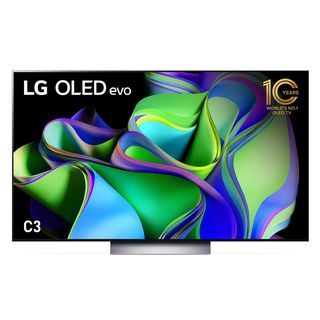
The best for size options
The LG C3 is packed with every gaming feature you could need, and is available in sizes from 42 inches to 83 inches, meaning there really is something for everyone. It just lacks the peak brightness of the Samsung S90C.

The best TV for lighter rooms
If you do your gaming during the day in a bright room, this Samsung screen is ideal, being capable of going brighter than the other TVs on this list.
Load the next products...
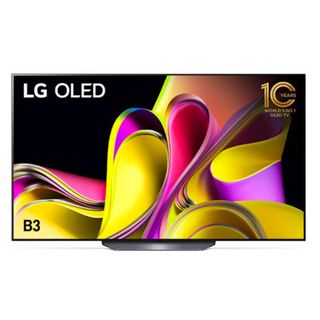
The best budget OLED
The LG B3 is one of the cheapest OLED TVs you can currently buy, yet still offers the full spectrum of gaming features, including 4K 120Hz support. It's not as bright as other LG OLEDs, and you only get two HDMI 2.1 ports, but for great performance to value ratio, it's a solid choice.

Best OLED for brightness
The S95C is brighter than any OLED we've seen, resulting in best-in-class HDR to help pick out super fine details. It's also a gaming powerhouse with four HDMI 2.1 ports.
Best gaming TVs in Australia in 2024
Why you can trust TechRadar
The best gaming TV overall

Specifications
Reasons to buy
Reasons to avoid
The Samsung S90C is our pick as the best gaming TV for most people because it packs in just about every gaming feature you could need, with a next-gen OLED screen that's brighter than the likes of the LG C3 or Sony A80L (both lower in this list), and yet for a very similar price to those TVs. It's simply incredible value – and we were blown away by its actual picture quality in our review.
When it comes to gaming features, you've got four HDMI 2.1 ports, all supporting 4K 120Hz from consoles (or 4K 144Hz for PC games), and variable refresh rates. Samsung's gaming menus let you tweak how responsive it is and which features you want to use, which is great for tinkerers. We measured input lag at under 10ms, so it's as responsive as TVs get.
Lots of TVs here offer all this, though – what sets the S90C apart is its bright QD-OLED screen. It's about 30% brighter than the LG C3, and you can really see this – clouds pop in the sky, colours are richer, and it's generally more visible over reflections in a bright room. That's while still delivering inky OLED black tones, of course, and you'll benefit from these in both movies and games. It's a fantastic-looking TV that ultimately delivers the best of both worlds.
It's also got better built-in sound than the LG C3. The only downsides to it are that it doesn't include Dolby Vision support (so, no DV gaming from Xbox Series X or when streaming movies and TV shows), there's no G-Sync for PC gaming, and that it only comes in three sizes. But we think that for the majority of people who aren't bothered by any of those, it's the best choice today.
Read the full Samsung S90C review
The best budget gaming TV
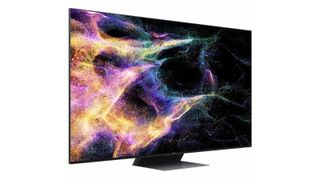
2. TCL C845
Specifications
Reasons to buy
Reasons to avoid
We'll start this summary by saying we haven't reviewed the C845 here at TechRadar, but our esteemed colleagues at What Hi-Fi? have, and over there it received a full five star rating. We're therefore using large parts of their verdict to complete this section.
At a price point that's friendly to a lot of budgets, the TCL C845 is no exception to the above and offers a lot to like for the cost-conscious consumer looking to get the very best bang for their buck. Its use of Mini-LED backlighting is the best example of how little the C845 compromises despite its lower price, offering brightness up to 2,000 nits that beats out OLED capabilities. It even manages to include HDR10+ as a very valuable point of difference to the likes of the LG C3 below.
The number of LED lights in locally dimmable zones will vary depending on the screen size you opt for, but for reference, What Hi-Fi? has reviewed both the 55-inch and 65-inch models, and found both to be incredible performers.
And what the C845 offers gamers at its price is just as excellent, with VRR support up to 120/144Hz, Auto Low Latency Mode (ALLM) and Clear Motion Rate (CMR) keeping input lag down to 6ms to provide smooth and lag-free onscreen visuals.
The build here is thicker than many other competitors, but overall the TCL C845 does a hell of a lot to stand out among all of 2023's new TVs. It's without doubt one of the finest budget options you can buy, whether you want something purely for gaming purposes, or even as your main home TV.
The best mid-range TV for PS5

Specifications
Reasons to buy
Reasons to avoid
Thanks to its 'Perfect for PS5' technology, gaming features and above average LED brightness, the Sony X90L is a no brainer if you are looking for a mid-range TV to go with your PS5.
The Sony X90L is a great option for gaming, with 120Hz, VRR and ALLM support and 'Perfect for PS5' features. 'Perfect for PS5' means that when a PS5 is connected, the X90L will use its auto HDR tone mapping feature to get the best picture out of games played on the console. Frustratingly, it has an average input lag time of 18.2ms, which is higher than all the other TVs on this list and only two 2.1 HDMI ports, but it still has very good gaming performance overall.
In terms of picture, the Sony X90L's most striking feature is its brighter-than-average LED picture. Its peak brightness measured at 1,225 nits in our testing, which is brighter than a lot of OLED and LED TVs, including the brilliant Samsung S90C. Thanks to this brightness, images on the Sony X90L are punchy and feature crisp details, that'll not only look great with games but also movies.
Sound quality and design are also solid on the Sony X90L, with clear dialogue and an attractive, slim design to the set itself. Yes, it may be more expensive than some OLED and mini-LED TVs on the market, but considering its high brightness and gaming features, the Sony X90L is an excellent gaming option.
Read our full Sony X90L review
The best OLED TV for PS5
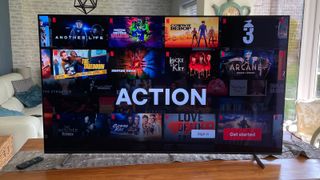
Specifications
Reasons to buy
Reasons to avoid
This is Sony's mid-range OLED TV, offering a less advanced screen than the likes of the Samsung S95C further down this list (or the S90C above, actually), but packing in Sony's best image processing and – crucially for us – gaming features.
You've got 4K 120Hz and VRR support over two HDMI 2.1 ports, though the latency of 16.5ms is not the best here by any means. This is part of Sony's Perfect for PS5 TV line-up, which means it includes Auto HDR Tone Mapping support with the console. This means the PS5 adjusts its HDR output to match the exact capabilities of the screen, so you always get the best-looking image.
And it's doesn't rely on its gaming features to get by. We were very impressed with the image quality in our tests, going as far to say in our review: "The Sony A80L might not benefit from next-gen OLED technologies and brightness, but its stellar appreciation for the finer things in AV life means it’s still hard to resist". That includes not just picture quality, but also the sound – Sony's Acoustic Surface tech is very impressive, and means you may be able to avoid getting a soundbar.
It doesn't go as bright as Samsung S90C, or the mini-LED TVs here, but it does offer an infinite contrast ratio – it's capable of 'true blacks', by which we mean we measured it at 0 nits when it was supposed to show blackness. Absolutely nothing. That's very impressive, and makes it great for atmospheric games or movies in HDR.
If you've got a PS5 in particular and want an OLED that gets that absolute best out of it without paying a super-premium price, this is an excellent choice.
Read the full Sony A80L review
The best gaming TV for size options
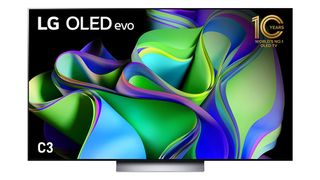
Specifications
Reasons to buy
Reasons to avoid
If you're wanting the best gaming TV and an overall powerhouse OLED screen that you'll have to fork out a decent packet for, the LG C3 is one of the best options.
Succeeding the (still excellent) C2, the C3 OLED's 4K display continues to be an absolute marvel, delivering exquisite black levels, vibrant colours and a dynamic overall picture performance allowing its quality to maintain across every task you'll throw at it. The new Alpha a9 Gen 6 processor in the latest iteration of LG's beaut of a display is once again the real star of show, offering greater improvements to object enhancement and dynamic tone mapping. Audio performance isn't bad, but it's fair to say it's not the most engaging sound ever. To really ramp up the immersive nature of your games, you'll want to consider adding a soundbar.
As for where and how the C3 excels for gamers, the inclusions of FreeSync, G-Sync and standard VRR right out of the box are a solid start. And with native 120Hz refresh rate and HDMI 2.1, PS5 and Xbox Series X owners can be assured of getting the maximum resolution and frame rate for their prized consoles of choice.
While not alone in this regard, the LG C3's price will be out of reach for many, and there is increasing competition from great-value screens such as the TCL C835 above, Still, the LG C3 offers plenty in the areas of performance and power to make it an option worth considering.
Read the full LG C3 review
The best gaming TV for bright rooms
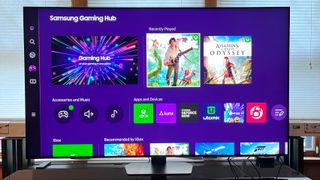
Specifications
Reasons to buy
Reasons to avoid
If you're looking for a bright TV that doesn't get lost in reflections even if you're watching it during the day in a sunlit room, allow us to introduce the Samsung QN90C. The Hisense U8K we mentioned earlier in this guide is nearly as bright, but this is slightly brighter still – and is also available in more sizes. It's a mini-LED display that delivers incredible brightness, it has an exceptionally low input lag for a TV of this size and it delivers impressive HDR, albeit with the usual Samsung omission of Dolby Vision.
With HDMI 2.1 support across all four HDMI inputs, compatibility with 4K 120Hz and support for ALLM, VRR and FreeSync Premium Pro, the QN90C is equipped to make the most of any next-gen console, although it lacks Dolby Vision gaming. And when you add in the popping brightness, assured motion tracking and mile-wide color palette already discussed, it shines above the rest. Mostly, anyhow. Game mode is fantastically fast but you do lose a little of the contrast and a slight increase in white-tone blooming, so when it comes to precise contrast, OLED TVs have an edge over it.
This is a spectacular TV for all kinds of entertainment. Contrast is superb for an LED TV for movies, and it's a very bright panel with a wide and convincing color range. The image processing doesn't produce strange results with CGI as some processors do, and the panel has great wide viewing angles.
You can get even more brightness from the Samsung QN95C, but in fewer sizes – if you want to beat reflections even in smaller sizes, this is the TV to get.
Read the full Samsung QN90C review
The best budget OLED gaming TV

Specifications
Reasons to buy
Reasons to avoid
If you want the perfect contrast and rapid response times of OLED, but for a lower price than the LG C3 or Samsung S90C, this is your option. You're getting a lower-brightness screen than either of those, and two HDMI 2.1 ports instead of four – but all the essentials are here.
OLED's famous contrast still looks excellent, and there's support for 4K 120Hz gaming with VRR using the regular HDMI kind (for the PS5 or Xbox), AMD FreeSync (for PCs or Xbox), or Nvidia G-Sync. LG's gaming menu makes it easy to tweak settings as needed to and you can even choose a preset depending on game genre.
Response time is very low at 9.2ms with Boost turned on, and it'll auto switch to gaming mode when it detects you've fired up a console.
For movies and TV, it's great there too – it has a less advanced image processor than the C3, but it's still great for a mid-range TV. Vivid colors, deep black levels and excellent motion handling make the B3 a winner when it comes to picture quality. The audio isn't that impressive, but we can live with that, especially if using a gaming headset.
With reductions happening all the time, as expected from LG, the B3 is now priced very competitively against the LG C3, offering very similar performance and features for a cheaper price.
Read our full LG B3 review
The best gaming TV for brightness
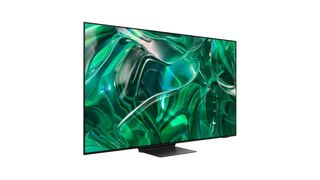
Specifications
Reasons to buy
Reasons to avoid
Competition will be fierce as we get a look at more of 2023’s TV releases, but right now the exceptional Samsung S95C OLED holds bragging rights as the most impressive TV on the market. While its predecessor (the S95B, below) was powerful in its own right, this year’s update feels like a true step above.
From a gaming perspective, the S95C is clearly designed with the latest PlayStation and Xbox consoles in mind, with four HDMI 2.1 ports included. Both the PS5 and Xbox Series X are built with this HDMI standard in mind, making the inclusion of HDMI 2.1 a necessity for a gaming TV if you're hoping to get the most out of your latest gen consoles. The S95C achieves this particularly well, with gaming features like refresh rate support up to 144Hz, ALLM and FreeSync Premium Pro.
But what really elevates the S95C to this top spot as the best gaming TV is what it also achieves elsewhere. Samsung improves on its attempts to marry the strengths of OLED and QLED panel technologies (which it calls QD-OLED) with the S95C, which offers a panel that is almost 40% brighter than the 2022 model without any sacrifices to picture quality. In our review, we measured the S95C’s peak brightness as high as almost 1,400 nits, which for comparison is much greater than the LG C2’s peak of around 850 nits.
This means that the S95C is a more suitable TV for bright rooms, and it manages to achieve this while still offering the dynamic, rich picture quality typical of OLED panels. The end result, as we summarised in our review, is the kind of balanced, dynamic picture performance “we’ve never seen before on an OLED TV”.
Sound quality for the S95C is also top excellent, with Samsung’s Object Tracking Sound system in the mix allowing its audio to extend beyond the confines of the TV's frame.
Naturally, the Samsung S95C QD-OLED doesn’t come cheap, and its lack of Dolby Vision support is a slight disappointment. But there are more than enough reasons to suggest that the S95C is the TV to beat in 2023 (so far).
Read our full Samsung S95C QD-OLED review
Best gaming TVs: FAQs
What makes a quality gaming TV?
If you’re seeing terms like Variable Refresh Rates, Auto Low Latency Mode and HDMI 2.1, you’d be forgiven for wondering just what it all means. So to help you better understand what it is and why it matters when selecting a gaming TV, we’ve defined the relevant terms for you below:
Frames per second (FPS):
Video as a technology works through the capture and display of still images at various rates per second, with frame rates, or FPS, a measure of how many times the image is updated each second on screen. As a general rule, the greater the FPS, the smoother a game will play. But not every TV is able to match the FPS your console or PC may be able to generate, making understanding them particularly important when it comes to gaming. It is also important to note that frame rates are not the same as refresh rates, which we’ll explore below.
Variable Refresh Rate (VRR):
Before the days of variable refresh rates, games were usually locked at a maximum of 60Hz - or the equivalent of 60 FPS. That not only hindered the performance capabilities of your gaming machine, which may well be powerful enough to reach much frame rates than 60, but it also meant the image itself might occasionally show glitches known as ‘tearing’ as the console and TV struggled to sync the signal.
VRR came first to the PC, where it’s known as G-Sync (Nvidia’s tech), or Adaptive Sync (an open standard which AMD also brands as ‘FreeSync). It allows the output of the console - which can vary immensely, often dipping down to below 60 FPS, and as high as a few hundred FPS - to be matched exactly by the TV. So - every single frame your console generates is displayed at that same moment on your TV, instead of being forced into 60 FPS on the TV, which results in the aforementioned glitching.
If your TV has VRR, it may well be marketed as AdaptiveSync, FreeSync, or even G-Sync. If you have any of these you’re good to go, and just need to make sure this feature is enabled on your TV’s menu (usually in Game Mode).
The end result is gaming that’s buttery smooth even during fast-paced movement, free of graphical glitches, and is much less likely to induce motion sickness.
Auto Low Latency Mode (ALLM):
The moment you press a button on your pad, or turn the wheel of your sim car, or make any input - that signal has to travel from the controller to the TV, be processed by the TV, and translated to a response on-screen. That delay (which we call lag, or latency) is tiny - a few dozen milliseconds at most - but it’s enough to sometimes make you feel an odd disconnect with the game and what you’re doing.
ALLM solves that by automatically switching to a low-latency mode when gaming where the lag is reduced to an absolute minimum, making you feel more in control, and the gaming experience more natural.
The fancy name obscures what is actually just a feature indicating that your TV has the ability to recognise when it’s being asked to pair up with a gaming console and adapt its output to the demands of gaming and ensure best possible performance.
High Dynamic Range (HDR):
Believe it or not, there is a whole new world of colours and colour variations beyond the colours of the rainbow, with variations of white (light) and black (darkness) being relevant to video content including video games. HDR is simply an indication that a TV boasts the ability to display a wider range of colours and shades, allowing it to display your games at their best through clearer, more dynamic colours and brightnesses as well as deeper shadows.
The two most common HDR formats are either HDR10 or HDR10+, with HDR10+ considered to be the superior of the two as its name would suggest.
If your game supports HDR, and it will need to, then your HDR-capable TV will look absolutely gorgeous, with sunlight so bright you almost feel your eyes burn, and colours so rich and beautiful the game world becomes stunningly real.
HDMI 2.1:
HDMI is simply the designation for the connection technology responsible for transmitting from Point A (your console) to Point B (your TV), with this HDMI technology offering superior integration with VRR, ALLM and the frame rate demands of your favourite video games.
2.1 is the very latest HDMI standard, and it allows higher resolutions at higher frame rates, with HDMI 2.1 able to display a 4K picture at over 60Hz. HDMI 2.1 is a very new standard, and it’s only starting to appear on devices now. Much more common is the older HDMI 1.4a standard, which limits 4K gaming to just 30Hz (or FPS). So, getting a TV for gaming with HDMI 2.1 is an absolute must. Note you will need an HDMI 2.1 compatible cable for the magic to happen, and your console or PC must also be able to output a HDMI 2.1 signal.
Do I need an 8K gaming TV?
On paper, 8K sounds pretty good, and with the power of the latest games consoles surely they must demand the latest resolution technology, right? Not quite. While the PS5 and Xbox Series X do have compatibility support with 8K and the power to output 8K content built-in, neither demand this resolution. In fact, game developers themselves generally aren’t working with 8K resolution in mind.
By all means, in 3-4 years time we could be seeing games demanding 8K, but it’s very much a non-essential right now that you’d be paying more for unnecessarily.
How we test
How we test the best gaming TVs
Read the specs and marketing claims of TV makers and they often over promise on what the TV can really do. That's why we've extensively tested all of the best gaming TVs in this list to ensure they work well and deliver on their next-gen gaming specs.
What that means is we'll publish the official specs from the TV manufacturer, like the input lag or refresh rates on offer, then tell you ourselves whether the TV lived up to them in practice.
To do this, we tend to review TVs with a range of different content. Of course, next-gen gaming takes priority in this guide, but we imagine you'll also want to know what movies and TV shows are like to watch as well.
That means as well as testing for all of the key specs you need in a gaming TV, like refresh rates and HDMI connections, we're also looking for good picture quality, vibrant colours and viewing angles to suit all kinds of rooms.
Sound is less of a priority with most gaming TVs as you'll get the best experience from gaming headphones or a soundbar, but it's always good to know you'll get a decent built-in experience. Which is why we've also detailed what it was like to listen to these TVs without additional devices, too.
As we've reviewed many TVs over the years – and many of the best gaming TVs – all of our testing isn't done in isolation, but takes into account the performance and specs of every TV that's come before it.
You can read about how we test, review and rate any product on TechRadar if you'd like to know more.
Get daily insight, inspiration and deals in your inbox
Get the hottest deals available in your inbox plus news, reviews, opinion, analysis and more from the TechRadar team.

Max is a digital content writer for TechRadar, covering home entertainment and audio, phones, laptops, gaming and virtually anything else that falls under the consumer electronics umbrella. Hailing from the United Kingdom, Max spent a combined five years writing for What Hi-Fi? and Pocket-lint, before moving to Australia in 2018. After a brief stint writing for men’s lifestyle publications, Max is back to working on his first passion of technology.
